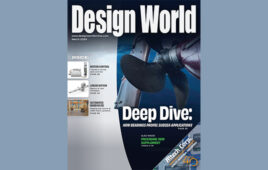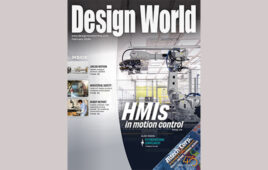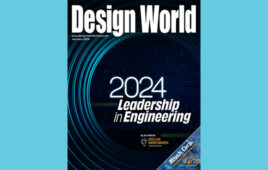In this issue:
26 DESIGN NOTES: Eyes in the sky: Mapping disasters
60 MOTION CONTROL: Motor manufacturers design motors for food and beverage applications that dramatically improve safety.
78 LINEAR MOTION: Linear motors compete with technologies that output high forces.
114 FASTENING & JOINING: Surface mount spacers simplify installation.
Will shifting job roles make manufacturers better or worse?

People older than a certain age like to talk about how their parents (well, in most cases, their fathers) worked their entire career at the same company. There’s something nostalgic about that vision of yesteryear, and there’s an implication that it was better than the current world of business, where many people seem to come and go and flit from job to job. (Not to mention all the others who are downsized through no choice of their own.)
Earlier this year, Mark Thompson, Decision Processes International, spoke to the attendees of the National Fluid Power Association’s Annual Conference about the next generation of leaders. He talked about the challenge we face in working with Millennials, because they operate in a circle. Their lives and their career paths will not be linear like earlier generations who went to school, got married, had kids, worked at one job, retired. They’re most comfortable with making stops
at various jobs; it’s simply a point on a journey. And given that turnover costs are estimated at $20,000 to $40,000 per employee for many companies, this is not small change—it’s of major consequence to how businesses are run.
What does this mean for American manufacturers? In some industries, there has already been somewhat of a brain drain, as employees with 40+ years of service retire, taking with them an incalculable amount of specific engineering process knowledge. I know of places where
handwritten manuals from former workers are guarded like diamonds, as engineers try to keep that practical design and troubleshooting knowledge from being lost.
There’s no easy answer, but I think the newer Millennial workers can help—and must be engaged—on a couple of levels.
First, more established workers must be open to the new ideas and creative energy that Millennials bring. So many processes are done in a certain way because they’ve always been done that way. Younger engineers, who’ve never known anything but the wonders of the Internet, 3D printing, and small ubiquitous sensors, may be able to help rethink manufacturing steps that could surely use a refresh.
And second, why not bring Millennials into the task of archiving each company’s most important processes? According to Thompson, they crave being given opportunities in new companies and helping to participate, to develop strategy. Explain to them why keeping this consolidated knowledge alive is so critical for maintenance and to troubleshoot existing equipment and systems. Ask for their help in finding a way to keep it alive. Maybe it’s as simple as conducting interviews with the most senior level engineers and having them transcribed. Put the documents on a searchable system in the company Intranet. Every manufacturing operation will have different needs and solutions, but complaining about how different the newest generation is will get us
nowhere. Engaging the youngest professionals to work with the most experienced ones has to be the way that we go forward and stay competitive.
Filed Under: DIGITAL ISSUES • DESIGN WORLD





Tell Us What You Think!